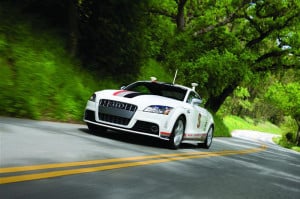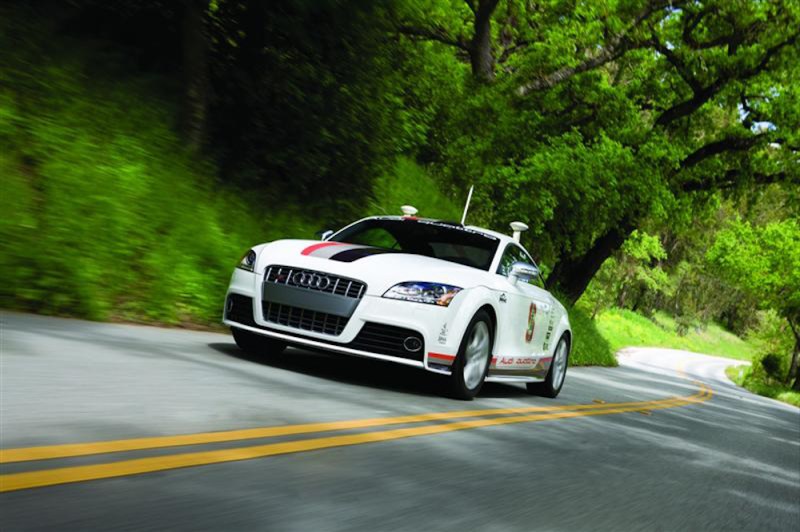Governor Jerry Brown’s bill to legalize autonomous vehicles for the first time in California has come under scrutiny by Stanford researchers involved in the development and legal study of self-driving cars.

Christian Gerdes, director of the Center for Automotive Research (CAR) at Stanford, who is currently working on autonomous vehicle research believes Brown’s deadline is too early.
“At the moment there is not a model of a self driving car,” Gerdes said. “A lot of things are still evolving, and it’s hard to write standards for something that is evolving so quickly.”
Senate Bill 1298, signed by Brown on Sept. 25, requires the Department of Motor Vehicles (DMV) to establish safety standards and performance requirements for the testing and operation of autonomous vehicles on public roads by 2015.
Nevada became the first state to legalize driverless vehicles last June, and similar laws have now been introduced before legislatures in Florida and Hawaii. However, Gerdes distrusts the level of expertise of the California DMV compared to that of the National Highway Traffic Safety Administration.
“They are being tasked with doing things that their organization isn’t set-up to do,” Gerdes said, while acknowledging the DMV has reached out to experts at the national administration and as well as at the Institute of Transportation Studies at UC-Berkeley for professional advice.
Bryant Walker Smith, a fellow at the Stanford Law School whose research focuses on the law and policy of self-driving vehicles, and who serves a DMV contact, also believes the bill is flawed.
“[The bill is doing] too much in the sense that it is looking far ahead to technology that doesn’t exist yet, and we won’t know what form they will exist… and it doesn’t address how existing law applies to automated vehicles,” Walker Smith said.
According to the bill, the State of California does not currently prohibit or specifically regulate the operation of autonomous vehicles on public roads.
The biggest advantage of automated cars, according to Walker Smith, is to reduce the 90 percent of collisions that are caused by human error.
The National Highway Traffic Safety Administration reported over 32,000 deaths and over 2.24 million injuries by motor vehicles crashes in the United States in 2010 alone.
“Even though there is great potential to reduce human error in driving, you have the chance of introducing human error from programming,” Gerdes said.
An autonomous vehicle, as defined by the bill, is a “motor vehicle that uses computers, sensors, and other technology and devices that enable the vehicle to safely operate without the active control and continuous monitoring of a human operator.”
Situations unforeseen by the programmer could lead to an incorrect decision on brakes or steering that may have serious consequences.
For instance, questions come up about whether the car should have any sense of self-preservation. Gerdes explained that if faced with a situation where the car could swerve out of the way, sacrificing itself instead of hitting a human being, how the car should make that choice and who should be responsible for the decision is yet unclear.
The greatest challenge is to create a car that can operate as well as humans and be able to make judgments and ethical decisions.
Gerdes regularly faces this challenge as he leads Stanford’s Dynamic Design Lab, which has produced the robot-guided Audi TTS named Shelley in partnership with the Volkswagen Electronics Research Lab.
Researchers working on Shelley are currently trying to modify the algorithms that drive Shelley to make the car operate more like a professional racecar driver. The team is also applying their racing work to show how their work on Shelley can lead to collision avoidance algorithms that could help avoid pedestrians or bicycles on the road.
The car now determines the path around the racetrack itself and can calculate a racing line, or route the vehicle will take, that is comparable to the best human drivers.
Currently, Shelley is faster than most humans on the racetrack, and comes within just a few seconds of professional drivers. However, Gerdes said there is still much work to be done before Shelley qualifies as a working model for automated vehicles.
“If you want a self-driving car that can drive as well as the best humans, you’re setting a very high bar,” Gerdes said.
Regardless, he hopes that Shelley will play a role in the research and development that the DMV and various institutions will conduct in the upcoming months.
